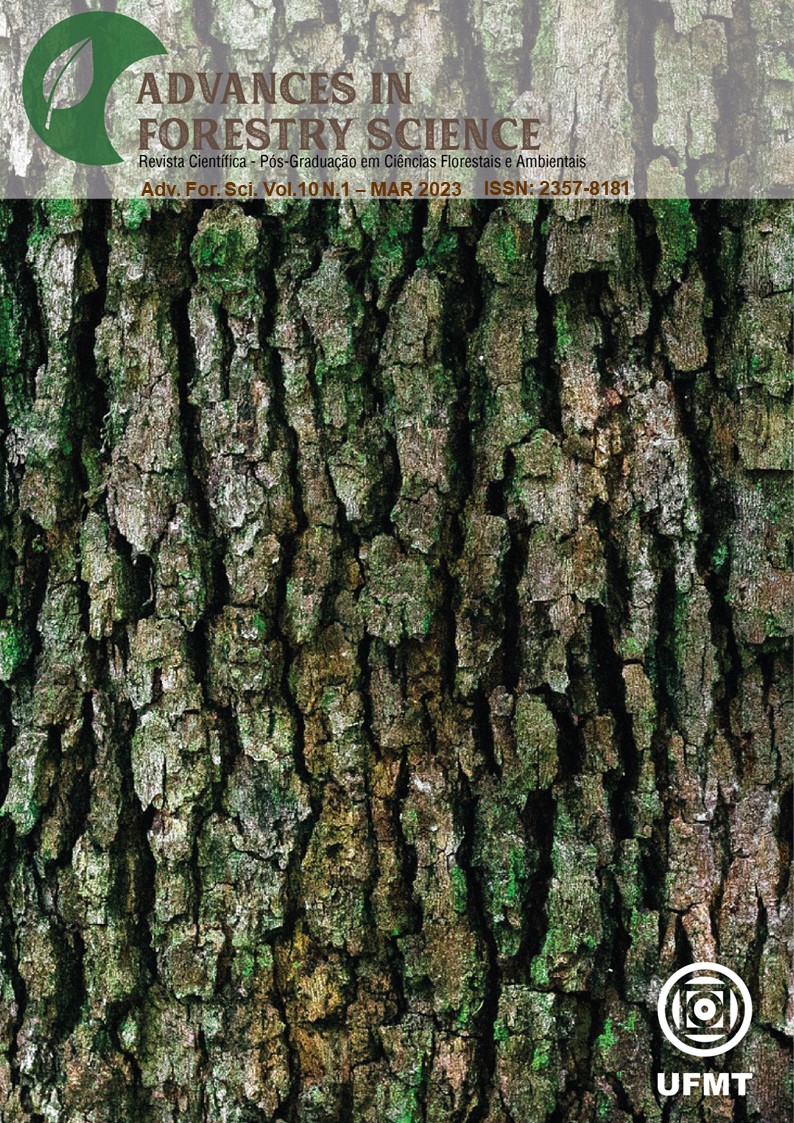Growth and quality of seedlings of Piptadenia gonoacantha (Mart.) J.F. Macbr. (pau-jacaré) in response to potassium and sulfur fertilization
DOI:
https://doi.org/10.34062/afs.v10i1.14020Abstract
In a floristic recomposition program, knowledge of the nutritional requirements of tree species is of great importance in the adequate recommendation of fertilizers in the nursery, since it provides good quality seedlings, reflecting the greater potential for survival and growth after planting. The objective of this work was to evaluate the effect of potassium (K) and sulfur (S) doses on the growth and biomass of seedlings Piptadenia gonoacantha (Mart.) J.F. Macbr. (pau-jacaré), to determine the optimal doses of these nutrients. An experiment was carried out using rigid polyethylene pots with a capacity of 1.5 dm³ and Red-Yellow Latosol soil. Treatments consisted of seven K rates (0, 50, 100, 150, 200, 250, and 300 mg.dm-³) combined with five rates of S (0, 20, 40, 60, and 80 mg dm-³), split into four applications: 20, 41, 62 and 83 days after transplanting. After 115 days of transplanting, were measured the shoot height, collar diameter, aerial and root dry weight. The analysis of variance showed a significant interaction for K and S doses for all evaluated characteristics except for shoot height, and this interaction was studied using the response surface methodology. Based on these results, the application of 160 mg.dm-³ of K and 55 mg.dm-³ of S splitted four times (20, 41, 62 and 83 days after transplanting) was recommended for pau-jacaré (Piptadenia gonoacantha) seedlings.
Downloads
Downloads
Published
Issue
Section
License
All copyright must be assigned to the Federal University of Mato Grosso.

